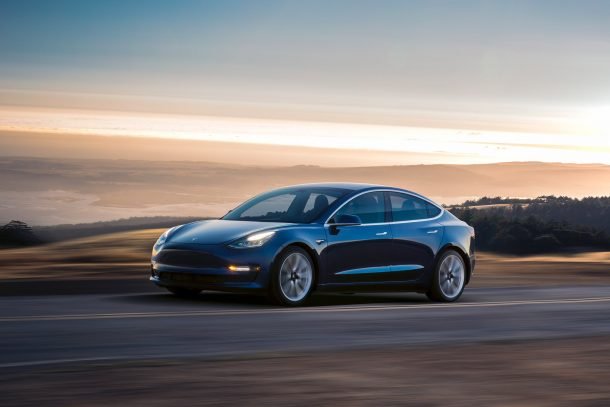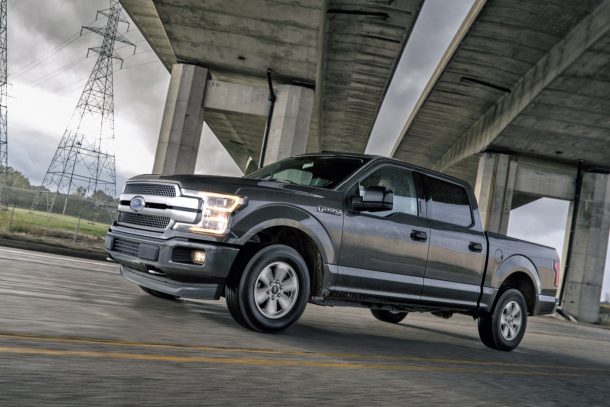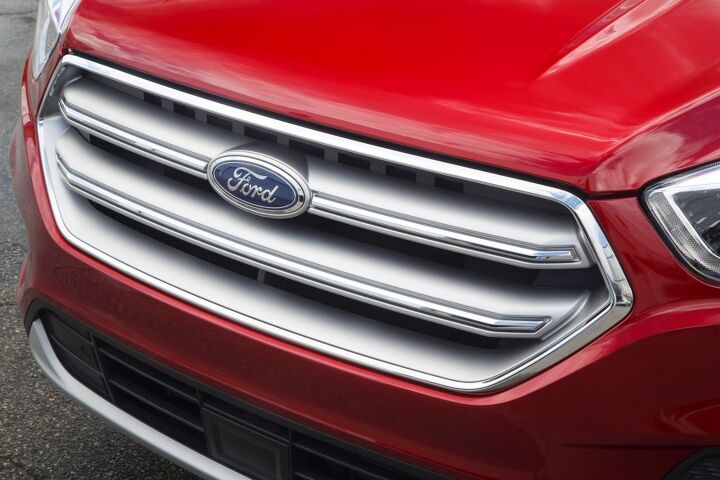#WallStreet
Tesla Shares Slip as Elon Musk's Reassurances Fall Flat
It’s now Tesla that’s been disrupted.
For all of the Silicon Valley speak about “disrupting” the automotive industry, and despite some very interesting successes in doing just that, Tesla is still struggling to actually get cars to market.
That’s understandable to an extent – the company is small, with limited experience. But CEO Elon Musk has talked a big game, and thus far not delivered on his promises.
Wall Street, predictably, has noticed.
Ford to Wall Street: Drop Dead
At a Detroit Economic Club event held last night in the Motor City, Blue Oval Chairman Bill Ford opined that Ford Motor Co. may have been too forthcoming with Wall Street in past years.
“In the past, maybe we said too much,” Ford said Tuesday.
Mighty Truck Sales (and Cost Cutting) Fuel Ford's Q3 Income
Ford Motor Company’s eagerness to quench North America’s insatiable thirst for light-duty pickups and SUVs drove the company to earn $1.6 billion in the third-quarter of 2017, according to an earnings report from Ford.
Also helping boost the automaker’s bottom line were some tasty foreign tax credits and an accountant’s best friend: cost reductions.
If You're Wondering Why Automakers Can't Stop Talking About Mobility, Wonder No More
“Mobility” is easily the most overused term in today’s automotive vernacular. Despite being incredibly nonspecific, executives can’t help but make it the bookend of most speeches involving long-term goals and production stratagems. But why?
The term itself pertains more to the industry itself than the specific products it’s developing. While “mobility” can be applied to any conveyance with a technological bent, the word also represents a company’s ability to move into other areas of business. And that’s what gets the investors and market analysts tugging at their collective collar, damp across the brow, so red hot they can’t help but raise the stock valuation of any company that seems poised to make a big move.
Tesla’s entry as novel manufacturer with a unique product was enough to send its share price through the roof, and established automakers took notice. Despite Mark Fields’ best attempt to rebrand Ford as a tech company, he couldn’t bottle that same lightning and paid the ultimate price — getting fired. However, General Motors may be succeeding where Ford initially failed. The proof of the pudding is how high its share prices continue to climb.
Ford CEO Outlines New Vehicle Development Plan, Shifts Investments, Trims Fat (and Models)
After much speculation, Ford CEO Jim Hackett has finally outlined where his company’s dollars will be spent in the foreseeable future. Hackett spent his summer performing what Ford called a “four-month deep dive” into the company’s strategy and business operations to see what changes needed to be made. His conclusions? This may surprise a few readers, but Ford will continue building and selling automobiles.
Alright, that isn’t a bombshell, but the brand is trying to frame itself as the Ford you’ve always trusted while also letting everyone know it’s still a “mobility company” with its eyes fixed on tomorrow. Without the public relations veneer, that plan translates into a reduced number of production models and trims, more money for electrification R&D, less for internal combustion engines, and a significant reduction in material costs.
Hackett’s address also served to reassure the nervous shareholders who ousted his predecessor, Mark Fields. Ford’s stock declined more than 30 percent during Fields’ tenure and many complained that his vision of transitioning from a traditional automaker to a Silicon Valley look-alike was partly to blame. Hackett did everything in his power to ease those fears.
“We’re going to be in the vehicle business moving both people and goods. Some myth about not being in the car business is gone,” Hackett told Wall Street.
It's Time to Talk About Tesla With Sanity
Before joining the gang at TTAC, I was freelancing, and a lot of my work centered around electric vehicles. Which means I was reading and writing a lot about Tesla, especially during that time a few months ago when the small California-based automaker somehow became the most valuable automaker in the world, at least from Wall Street’s perspective, based solely on its potential.
Some of my work took me into the depths of the pro-Tesla blogosphere. While these sites can serve as valuable sources for news about the company, they also have an unabashed pro-Tesla stance. Objective, they (mostly) ain’t.
And that’s okay – while many, if not most, media outlets default towards being as objective as possible, there’s no rule stating that your blog or outlet has to be objective. It’s okay for HuffPo to be leftist and National Review to lean right. And so it is with outlets that cover Tesla – no one expects Teslarati to be critical of the brand.
It’s one thing to have pro-Tesla blogs, of course, but another to be unable to even talk about the brand without dividing into two tribes – the fanboys who think Tesla is the best company ever and can do no wrong (as it disrupts the industry and solves every one of the world’s problems), and the “haters” who think that Tesla is doomed to fail any day now and it’s a minor miracle the company has lasted this long.
GM Fined $28k By NHTSA, Places 2 Engineers On Paid Leave
Associated Press reports General Motors has placed two engineers on paid leave as “an interim step” in the investigation conducted by former U.S. attorney Anton Valukas. Spokesman Greg Martin declined to name the two engineers in question.
97 Months And Running
8 years to pay off a car? A report by the Wall Street Journal claims that in Q4 of 2012, the average car loan stretched out to 65 months, or just over 5 years. Loan terms were being stretched out over increasingly longer terms too, with credit firm Experian reporting that nearly 1 in 5 car loans had terms between 73 and 84 months long, with some stretching for as long as 97 months.
How A New Generation Of Sub-Prime Auto Financing Could Cause Another Catastrophe
March was the 5th straight month of a SAAR above 15 million vehicles. Industry analysts have explained the strength of the market in a number of ways. The need to replace older vehicles is one (new car sales were hit hard during the recession as consumers held on to their vehicles for longer. This also caused used car prices to skyrocket, something TTAC has been documenting), while others have cited increasing fleet demand, and the desire to replace vehicles damaged in Hurricane Sandy.
But one factor that is just starting to get attention outside of TTAC is sub-prime financing. Sub-prime lending, which involves giving high-interest loans to customers with poor credit scores, is driving the SAAR in a big way, by letting buyers with poor credit purchase new cars. In turn, the sub-prime bubble is being driven by Wall Street, whose clients cannot get enough of financial instruments backed by sub-prime auto loans.
Chrysler Debt Effort Stalls: Goverment Loans Not So "Shyster" After All?
As Steve Rattner described in his book “Overhaul,” the Presidential Auto Task Force very nearly decided not to rescue Chrysler, with the decision coming down to a single vote. Now, it seems, that with Chrysler blaming the “shyster” interest rates on its government loans for its lack of profitability, Chrysler’s viability now depends on rounding up a “lender of second to last resort.” And, according to the latest reports, that rescue-of-a-rescue effort is still very much hanging in the balance as well. If CEO Sergio Marchionne thought the government’s loan terms were “shyster”-ish, he was clearly in need of some context from Wall Street… and he doesn’t seem to be liking it.
























Recent Comments